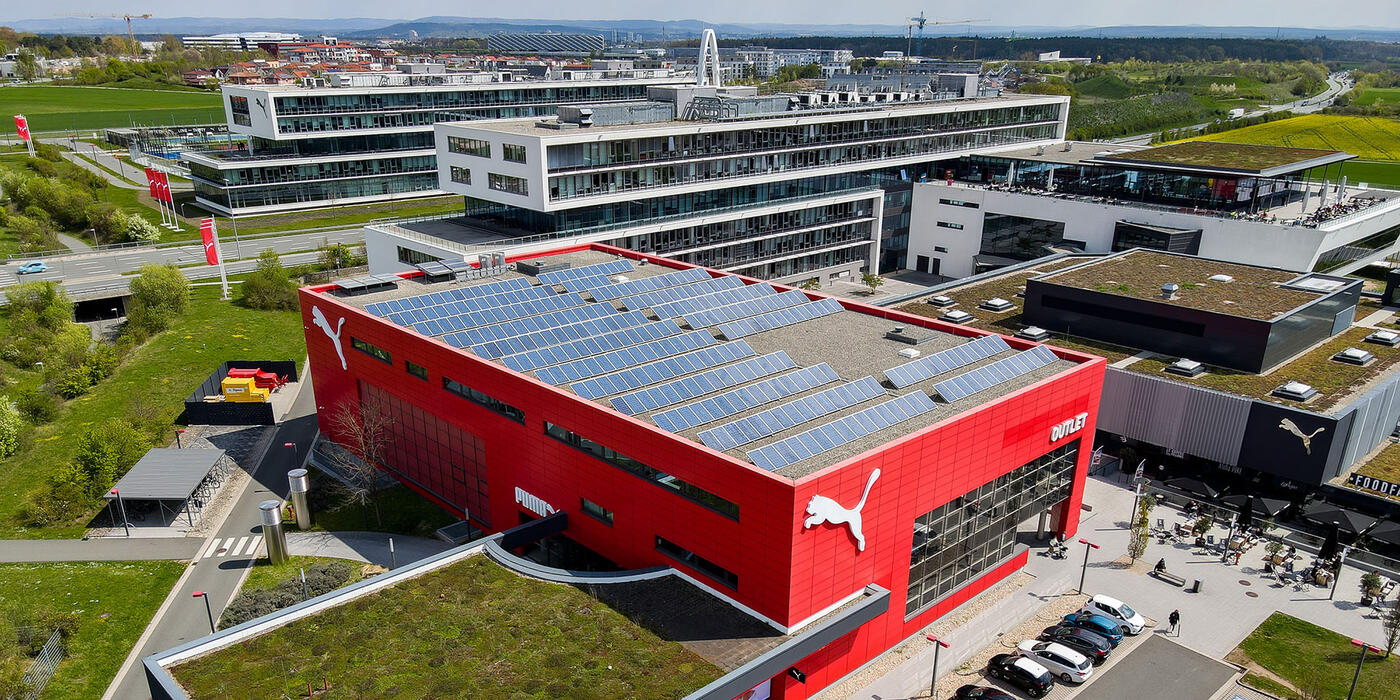Our Approach

We believe in integrating sustainability into every aspect of our manufacturing processes for all products – from the sourcing of raw materials to the manufacturing stage, both environmentally and socially.
At PUMA, we produce millions of shoes and textiles every year. We use sustainability collections to inspire our consumers, but if sustainability did not play a major role for the majority of our products, we would have failed to make a difference.
Sourcing materials and manufacturing products leave an environmental and social footprint behind. Only if we aim to make our entire sourcing and production processes more sustainable, we can optimize the impact PUMA has on the environment and communities. This is why we are sourcing key materials such as cotton, polyester, leather and cardboard from more sustainable sources. We are striving to eliminate more and more chemicals from our production processes and to reduce our carbon emissions in our own operations as well as in our supply chain.
We also believe in industry collaborations, because only if we all join forces and support each other, we will be able to introduce new, sustainable processes and find solutions that will make a difference. PUMA has been a long-term member of numerous industry collaborations to cover a wide field of environmental and social issues that need to be addressed together by all players within our industry.
Strategic Approach
Sustainable Development Goals
The United Nations Sustainable Development Goals (SDGs) define global development priorities for 2030 and aim to join efforts among businesses, governments and civil society around a defined set of targets. The PUMA 10FOR25 Sustainability Targets are linked to the SDGs.
UN Guiding Principles
The UN Guiding Principles on Business and Human Rights are a set of guidelines for States and companies to prevent, address and remedy human rights abuses. Human Rights are featured with an own target section in PUMA's 10FOR25 strategy.
Positive Impact
Our PUMA sustainability strategy is centered around creating maximum positive impact. This means integrating sustainability into our main business and volume styles.
Partnership with Vendors
The majority of our environmental and social impacts are created in our supply chain. Therefore, we are working in partnership with our vendors to achieve our common goals - from ensuring fair working conditions and effective pollution controls to the development and use of more sustainable materials.
INDUSTRY PEERS Industry Peers
In an industry where many suppliers are shared among brands, we cannot do it alone. Therefore, we are working with our industry peers towards harmonizing sustainability standards and joint efforts towards implementing good practices to create positive impact.
PUMA Track Record
Judging the Score
Our sustainability department is in constant exchange with PUMA’s Managing Directors and top management on sustainability topics. Through executive reports as well as in-person meetings, PUMA aims to keep all internal stakeholders informed to be able to react quickly. In turn, we receive frequent feedback from them as well as external stakeholders.
The Board of Management reports to PUMA’s shareholders via the Supervisory Board as well as our Annual Report, which contains a detailed sustainability section.
Sustainability Team
In terms of sustainability, the highest governance body at PUMA is the Sustainability Committee of the Supervisory Board. Within our Management Board, sustainability falls under the responsibility of the Chief Sourcing Officer, although all members of the PUMA Management Board are frequently updated on sustainability topics. Furthermore, the functional heads of PUMA at SE level are members of the Executive Sustainability Committee. This group of Managers is responsible for the supervision and setting-up of our sustainability strategy. In regular meetings, the members oversee the progress of PUMA against our sustainability targets. Dedicated corporate and supply chain sustainability departments continuously work on improving PUMA’s sustainability performance.
Photo Credits: Christoph Maderer/ PUMA